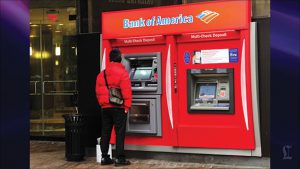Bloomberg
After their worst start to a year in decades, Treasuries are reasserting their haven status and eclipsing the appeal of riskier assets — a troubling combination for Bank of America Corp (BofA) strategists.
US sovereign debt attracted $7.4 billion in inflows, the most since the coronavirus pandemic first struck, according to a BofA note citing EPFR Global data for the week.
Meanwhile, investors are dumping inflation-protected Treasuries — which offer a way to hedge against higher prices — and credit at the fastest pace since April 2020. These flows indicate the risk of a recession is rising, strategists including Michael Hartnett wrote.
The fastest US inflation in four decades is piling pressure on the Federal Reserve to act quickly and aggressively. Policy makers need to deliver a Volcker-style shock if they wants to slow inflation without
causing a recession, according to Credit Suisse Group AG strategist Zoltan Pozsar.
Money markets are flashing warnings of a policy error. While traders are betting the upper bound of the Fed funds rate will surge to 2% next year — from 0.25% currently — they also see nearly a quarter-point of cuts by 2025.
Furthermore, US 10-year yields fall below their shorter seven-year peers for the first time since March 2020 after data last week showed consumer prices jumped 7.5% in January. The move suggests investors see higher rates acting as a drag on longer-term growth.
Treasury Curve Inverts in Middle as 7-Year Rate Tops 10-Year
Benchmark Treasury yields were little changed at 1.97% as of 7:52 am, two days after climbing to the highest in more than two years. The Bloomberg US Treasury index has delivered 3.3% of losses so far this year, set for the worst return since at least 1974.
 The Gulf Time Newspaper One of the finest business newspapers in the UAE brought to you by our professional writers and editors.
The Gulf Time Newspaper One of the finest business newspapers in the UAE brought to you by our professional writers and editors.
